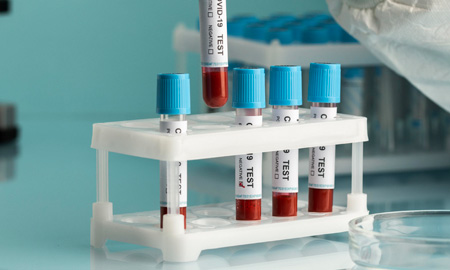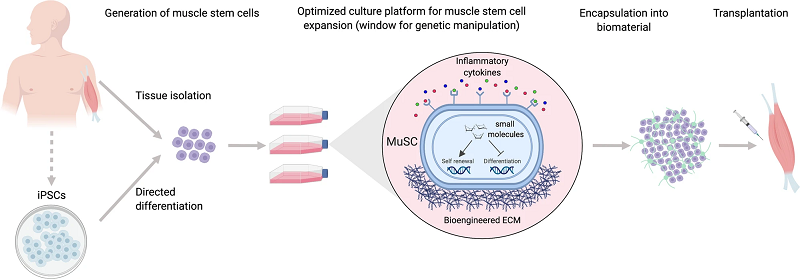Autologous haematopoietic stem cell transplantation and other cellular therapy in multiple sclerosis and immune-mediated neurological diseases: updated guidelines and recommendations from the EBMT Autoimmune Diseases Working Party (ADWP) and the Joint Accreditation Committee of EBMT and ISCT (JACIE)
Abstract
These updated EBMT guidelines review the clinical evidence, registry activity and mechanisms of action of haematopoietic stem cell transplantation (HSCT) in multiple sclerosis (MS) and other immune-mediated neurological diseases and provide recommendations for patient selection, transplant technique, follow-up and future development. The major focus is on autologous HSCT (aHSCT), used in MS for over two decades and currently the fastest growing indication for this treatment in Europe, with increasing evidence to support its use in highly active relapsing remitting MS failing to respond to disease modifying therapies. aHSCT may have a potential role in the treatment of the progressive forms of MS with a significant inflammatory component and other immune-mediated neurological diseases, including chronic inflammatory demyelinating polyneuropathy, neuromyelitis optica, myasthenia gravis and stiff person syndrome. Allogeneic HSCT should only be considered where potential risks are justified. Compared with other immunomodulatory treatments, HSCT is associated with greater short-term risks and requires close interspeciality collaboration between transplant physicians and neurologists with a special interest in these neurological conditions before, during and after treatment in accredited HSCT centres. Other experimental cell therapies are developmental for these diseases and patients should only be treated on clinical trials.
Introduction
Multiple sclerosis (MS)
MS is the most common chronic inflammatory demyelinating disease of the central nervous system (CNS) and the leading cause of non-traumatic neurological disability of young adults [1]. It affects ~2.3 million people worldwide with a prevalence of 1 in 700 adults [2]. Following diagnosis, patients rapidly fall out of employment, with recent data indicating that after 5 years only 25% of people are still working. As a result, MS has an economic impact disproportionate to its prevalence related to the high cost of disease modifying therapies (DMTs), the direct and indirect costs of relapses and associated costs of benefits and personal care [3].
MS is typically a biphasic disease. In the intial phase, the illness usually runs a relapsing remitting (RRMS) course [4] characterised by repeated episodes of inflammation within the CNS, often accompanied by Gadolinium (Gd) enhancing lesions on magnetic resonance imaging (MRI) and characterised pathologically by inflammatory infiltrates rich in T and B cells and macrophages [1]. The ensuing secondary progressive MS (SPMS) phase is characterised by slow accumulation of disability with a progressive decline in inflammation, and increasing axonal and neuronal loss [5]. Other clinical variants include primary progressive MS (PPMS) where patients experience disability progression from disease onset [4], and aggressive (or malignant) MS where the illness runs a fulminant course with rapid accumulation of significant disability [6]. The Expanded Disability Status Scale (EDSS) [7] is the most commonly used method of assessing disability progression in MS, whilst MRI is used to assess disease activity and atrophy.
Inflammatory forms of MS respond to immunomodulation with DMTs that aim to achieve a state of No Evidence of Disease Activity (NEDA), reflected by absence of clinical relapses, disability progression and MRI disease activity [8]. In the majority of patients with RRMS, the illness can be controlled by currently approved DMTs and various professional guidelines are available with recommendations for their sequential use based on baseline disease activity and response to treatment [9]. However, a significant proportion of patients continue to have clinical and/or MRI disease activity despite the use of DMTs [10]. Whilst more efficacious DMTs may lead in many but not in all patients to relatively high levels of disease control in the short term reflected by NEDA, these agents are expensive and have significant risks including infusion-associated reactions, secondary autoimmunity and infections including progressive multifocal leukoencephalopathy (PML). Unfortunately, the treatment options are very limited once the neurodegenerative phase of SPMS is established [11]. Equally, PPMS is very challenging to treat although some patients with clinical and MR scan activity may respond to immunomodulation [12].
There is increasing published evidence, including randomised controlled trials (RCTs), which convincingly demonstrates robust clinical efficacy of autologous HSCT (aHSCT) in patients with highly active MS, along with improved safety with markedly reduced levels of non-relapse mortality (NRM) risk, which supports its incorporation into standard MS treatment algorithms




